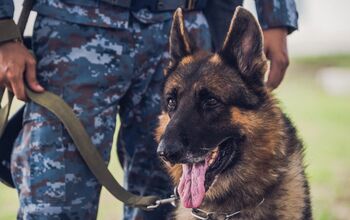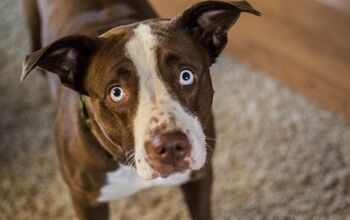Top 10 Things to Know About Hip Dysplasia in Dogs

Many dog owners fail to realize that dogs can develop musculoskeletal disorders just as much as people can. Hip dysplasia, a malfunction in the hip joint, is the most common skeletal condition in dogs. The risk for this condition is determined by various genetic and environmental factors and it seems to affect some breeds more than others. Keep reading to learn 10 things you didn’t know about hip dysplasia.
- Hip dysplasia is more common in large and giant breeds.
Though hip dysplasia does not seem to affect one gender more than the other, it is more common in large and giant breeds than in smaller dogs. The risk is even higher for large and giant breed puppies that grow too quickly – rapid growth can put excess strain on the bones and joints, increasing your dog’s risk for musculoskeletal issues in adulthood.
Related: What Is Hip Dysplasia In Dogs?
- Certain breeds have a genetic predisposition for hip dysplasia.
As you already know, large and giant breeds are more likely to develop hip dysplasia than smaller breeds but there are also specific breeds which have a higher rate of inheritance. Some of the breeds most likely to develop hip dysplasia include Saint Bernards, Great Danes, German Shepherds, Golden Retrievers and Labrador Retrievers.
- Hip dysplasia typically presents while the dog is still young and immature.
Early onset is common for hip dysplasia in dogs – it typically begins during the growth phase between 6 and 18 months of age. There are cases of late onset, mostly when hip dysplasia develops due to osteoarthritis which is a form of arthritis or joint inflammation characterized by deterioration of the joint.
Related: All About Elbow Dysplasia in Dogs
- Puppies that develop hip dysplasia usually don’t exhibit signs of pain.
Hip dysplasia often causes the femoral head (the head of the femur bone) to slip out of its place in the hip joint. Most dogs only experience pain when the bone is actually out of place, so it is uncommon for puppies to whine or cry in pain with this condition.
- Nutritional factors may affect the severity of hip dysplasia.
In recent years, a link has been formed between excess protein and calcium intake and hip dysplasia. Commercial dog food sometimes causes large and giant breeds to grow too quickly which predisposes them to skeletal problems like hip dysplasia. This is why it is important to purchase dog food formulated for your dog’s size.
- Diagnosis starts with a physical exam and x-rays.
Diagnosing hip dysplasia can sometimes be tricky because dogs may not exhibit symptoms except when the bone is actually out of place. Over time, however, repeated luxation can lead to inflammation and arthritis in the joint. Diagnosis typically starts with a physical exam, a review of your dog’s symptoms, and x-rays to confirm joint damage.
- In adulthood, dogs may show signs of rear end weakness.
In cases where hip dysplasia doesn’t present when the dog is young, it can progress into osteoarthritis which may then produce symptoms such as rear end weakness. This is particularly common in dogs that are overweight or obese.
- In cases were surgery is not required, treatment can be done on an outpatient basis.
Whether or not your dog requires surgery will depend on his age, his size, and the severity of the condition. If surgery is not required (or recommended) outpatient physiotherapy may help to improve your dog’s use of the joint by decreasing stiffness and maintaining muscle strength.
- Swimming is an excellent therapy for hip dysplasia.
If your dog doesn’t need surgery, he may still require some form of therapy to improve his mobility and to strengthen the muscles that support the joint. Swimming is an excellent option because it is low impact and it will help your dog build muscle without further damaging the joint.
- You should not breed dogs that have hip dysplasia.
Because hip dysplasia is largely an inherited condition, it is important that dogs who develop the condition not be bred. If you know that your dog comes from a line that carries the disease, you should talk to your vet about way to prevent it or slow its progression.
If you suspect that your dog is suffering from hip dysplasia, you should contact your veterinarian. Your vet will be able to perform the necessary tests to confirm or rule out the diagnosis, at which point you can begin a course of treatment.

Kate Barrington is the loving owner of two cats (Bagel and Munchkin) and a noisy herd of guinea pigs. Having grown up with golden retrievers, Kate has a great deal of experience with dogs but labels herself a lover of all pets. Having received a Bachelor's degree in English, Kate has combined her love for pets and her passion for writing to create her own freelance writing business, specializing in the pet niche.
More by Kate Barrington























